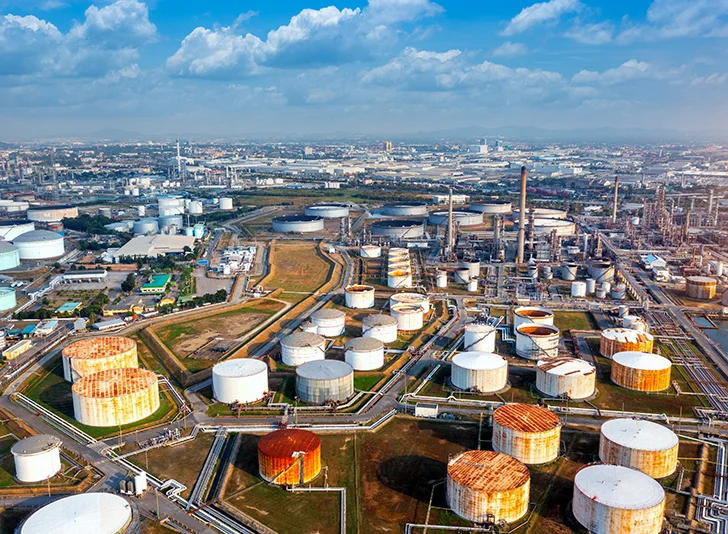Diversified Exploration and Production (E&P) companies maintain a balanced mix of oil and gas production, allowing them to adapt to market fluctuations. These companies aim to benefit from changing oil and gas prices by adjusting capital allocation and operational focus accordingly. However, they also face the challenge of sustaining and expanding their reserves, which form the foundation for long-term production and value. Reserves represent estimated quantities of economically recoverable oil and gas from existing fields or new discoveries. Reserves can be augmented through organic means (drilling, exploration, enhanced recovery) or inorganic means (acquisitions, mergers, divestitures).
In 2020, major diversified E&P companies in the U.S. sought to add reserves, and the Reserve Replacement Ratio (RRR) was a crucial metric for evaluating their performance. The RRR measures how much of the production is replaced by reserve additions in a given year, with a value above 100% indicating that a company is adding more reserves than it is producing.
According to data from Oil and Gas Financial Analytics, LLC, the diversified E&P peer group, consisting of 10 companies, added a total of 2.3 billion barrels of oil equivalent (Bboe) of reserves in 2020 while producing 0.8 Bboe, resulting in a RRR of 287%. This RRR was higher than the 177% for the gas-weighted E&P peer group and the 130% for the oil-weighted E&P peer group, as discussed in previous blogs. However, the RRR for the diversified E&P peer group was primarily driven by inorganic reserve additions, accounting for 82% of the total, while organic reserve additions contributed only 18%. This differed from the more balanced contributions from organic and inorganic reserve additions in the gas-weighted and oil-weighted E&P peer groups.
The inorganic reserve additions for the diversified E&P peer group were mainly due to the acquisitions of Noble Energy and Parsley Energy by Chevron and Pioneer Natural Resources, respectively. Chevron’s $13 billion acquisition of Noble Energy added 1.5 Bboe of reserves, primarily in the Permian Basin, DJ Basin, and Eastern Mediterranean. Pioneer Natural Resources’ $7.6 billion acquisition of Parsley Energy added 0.5 Bboe of reserves, mainly in the Permian Basin. These two deals accounted for 87% of inorganic reserve additions and 71% of total reserve additions for the diversified E&P peer group in 2020.
Organic reserve additions for the diversified E&P peer group were modest, reflecting reduced capital spending and drilling activities due to low oil and gas prices and the impact of the COVID-19 pandemic. Revisions of previous estimates, mainly in the Permian Basin, Eagle Ford Shale, and Bakken Shale, added 0.2 Bboe of reserves. Discoveries and extensions in the Gulf of Mexico, Permian Basin, and DJ Basin contributed 0.1 Bboe, while purchases and sales of minerals had a net negative impact of 0.1 Bboe, primarily in the Permian Basin and Eagle Ford Shale.
RRRs for individual companies in the diversified E&P peer group varied widely based on reserve additions and production in 2020. Chevron had the highest RRR of 1,026%, adding 1.5 Bboe of reserves while producing 0.1 Bboe. Pioneer Natural Resources followed with a RRR of 465%, adding 0.5 Bboe of reserves with the acquisition of Parsley Energy. EOG Resources had the third-highest RRR of 231%, adding 0.4 Bboe of reserves, primarily from revisions of previous estimates.
In conclusion, diversified E&P companies in the U.S. achieved a high RRR of 287% in 2020, reflecting their ability to replace more reserves than they produced. However, this was primarily driven by significant acquisitions, while organic reserve additions were modest due to reduced capital spending and drilling activities. The varying RRRs among individual companies underscore differences in reserve replacement and production levels, crucial indicators for assessing the long-term sustainability and value of diversified E&P companies.


